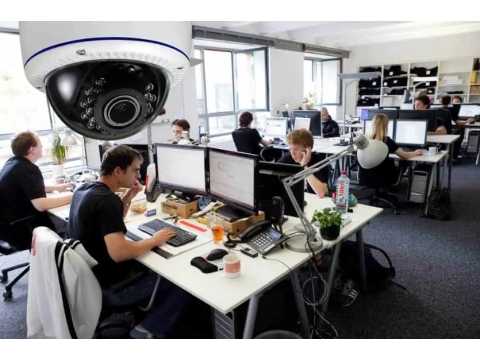Surveillance Cameras for Offices: Secure and Monitor Effectively
Office environments present a unique opportunity for customizing surveillance systems due to their robust infrastructure, including cabling networks, wireless connectivity, and internet access. Selecting the right cameras for your office requires understanding the balance between functionality, cost, and efficiency.
Analog vs. IP Cameras: Which Fits Your Office?
IP Cameras
Advantages:
- Easy integration into existing networks (wired or Wi-Fi).
- Possibility of direct internet connectivity, allowing for remote monitoring.
- Eliminate the need for additional recording devices in smaller setups.
Challenges:
- Require substantial network bandwidth, especially for multiple cameras.
- Vulnerable to unauthorized access if improperly secured.
- Higher cost compared to analog alternatives.
- Megapixel resolutions, while appealing, are unnecessary for most office monitoring tasks.
Analog Cameras
- Advantages:
- Cost-effective and simpler to set up for large-scale systems.
- Immune to network-related vulnerabilities like bandwidth limitations or hacking.
- Reliable for standard office monitoring tasks without excessive technical demands.
Design and Placement Considerations
Dome Cameras:
These are the go-to choice for offices, blending seamlessly into interiors and offering a wide field of view. Their discreet design works particularly well with suspended ceilings.Placement Tips:
- Position cameras to cover entry points, reception areas, and high-traffic zones.
- Avoid obstructed views or placing cameras in easily tampered locations.
Key Features for Office Surveillance Cameras
Resolution:
1080p (2MP) resolution is sufficient for most office setups, ensuring clear images without overloading storage or networks.Field of View:
Cameras with adjustable focus (varifocal) allow precise adjustments, especially in large or irregularly shaped offices.Data Security:
For IP cameras, ensure encrypted communication and strong passwords to protect against breaches.Convenience Features:
- Motion detection to save storage and alert on activity.
- Remote monitoring capabilities to oversee operations in real-time.
Conclusion
The best office surveillance system depends on your specific needs, budget, and existing infrastructure. Analog systems provide cost-effective simplicity, while IP cameras offer advanced functionality for modern workplaces. Consider combining both types strategically to achieve an efficient and secure setup.

